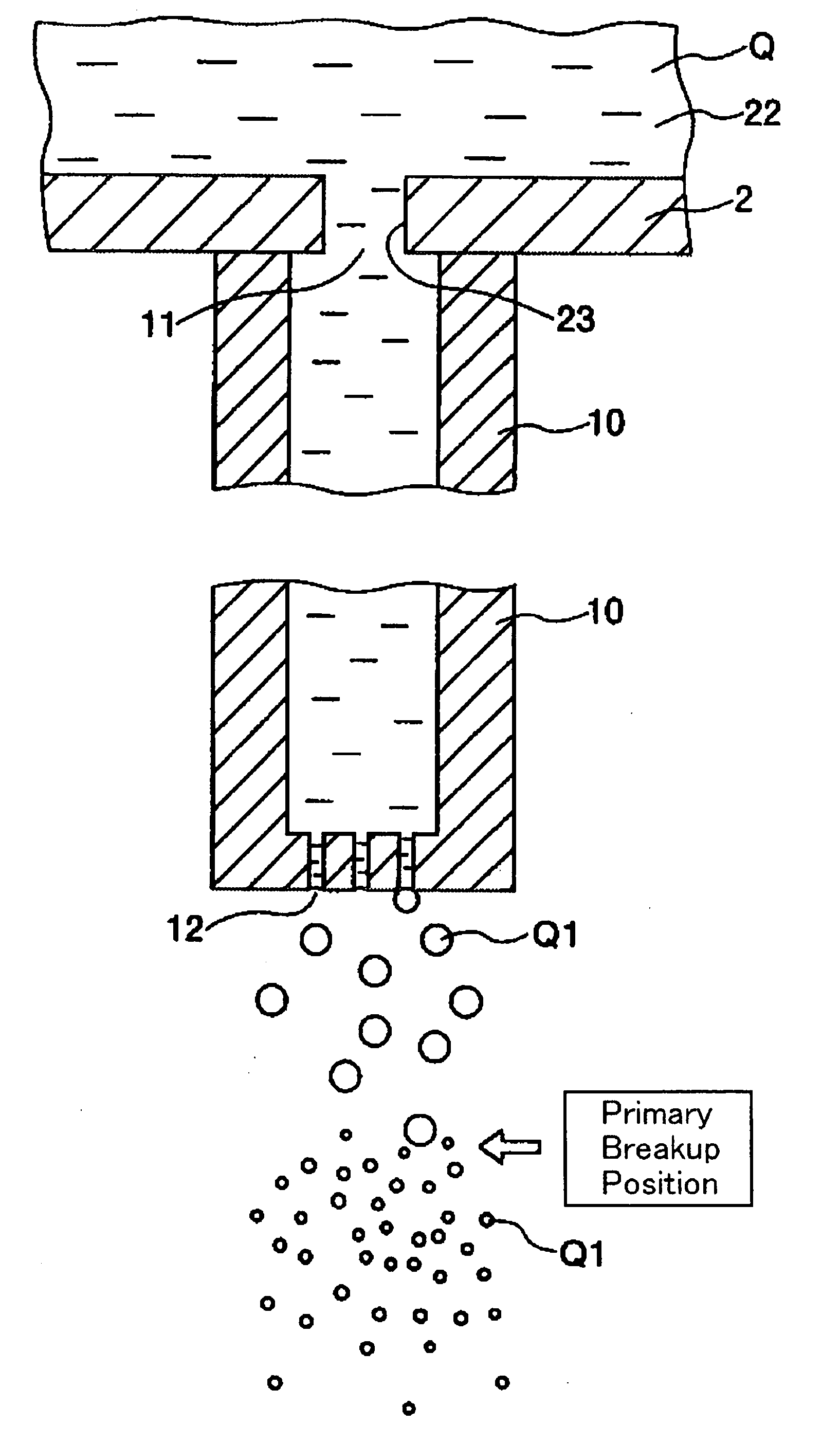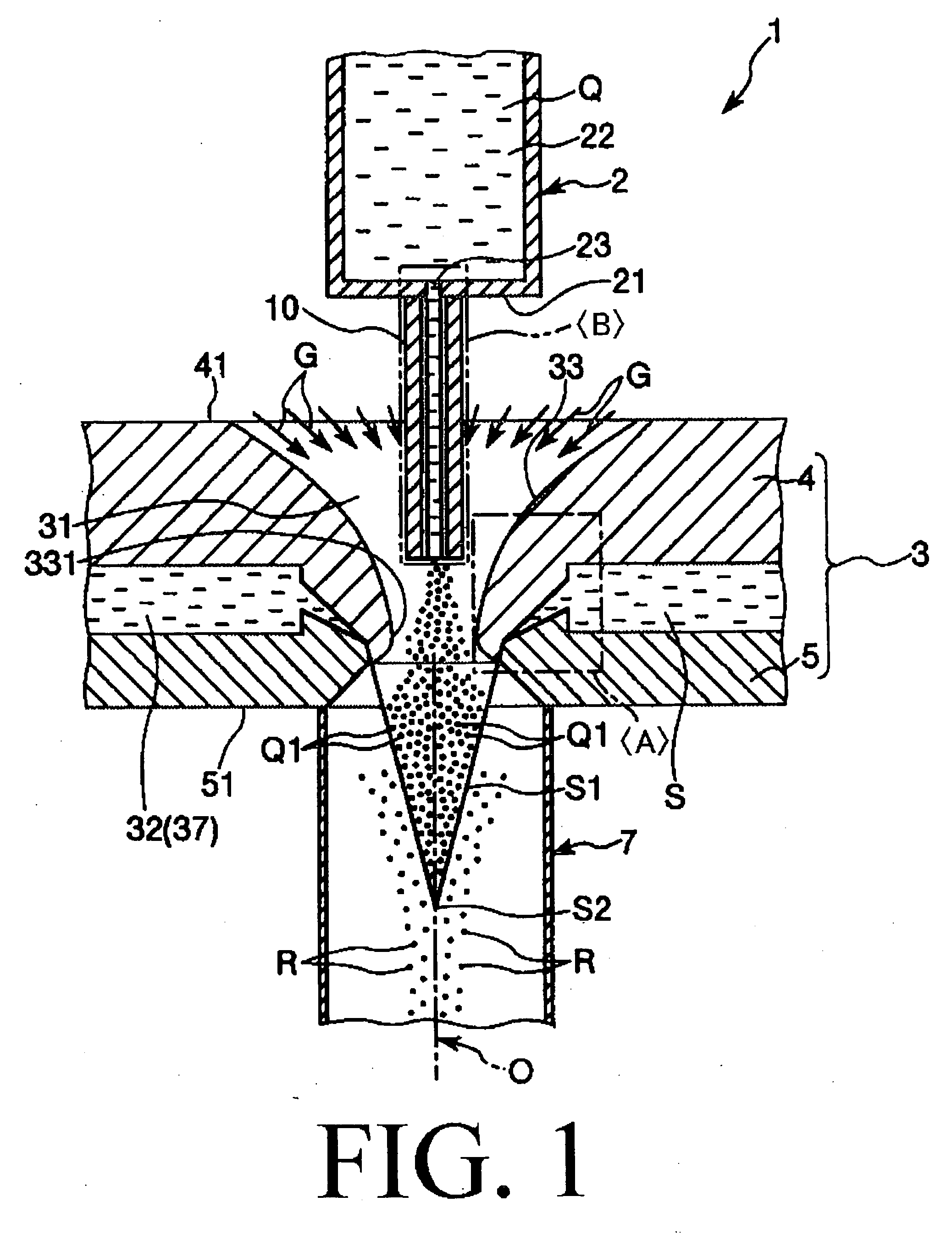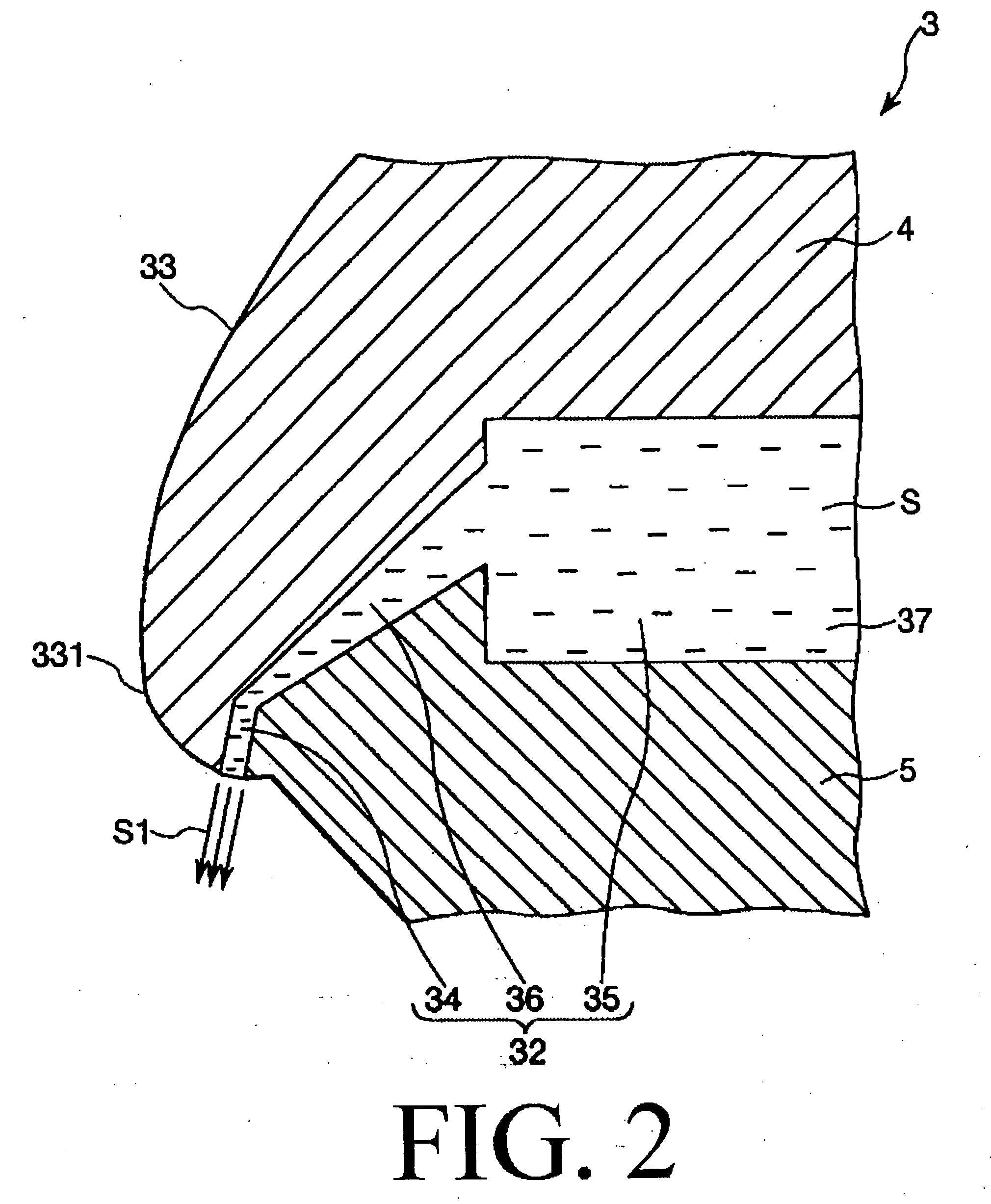Metal powder production apparatus and metal powder
- Summary
- Abstract
- Description
- Claims
- Application Information
AI Technical Summary
Benefits of technology
Problems solved by technology
Method used
Image
Examples
first embodiment
[0065]First of all, description will be made on a metal powder production apparatus in accordance with a first embodiment of the present invention.
[0066]FIG. 1 is a schematic view (vertical sectional view) showing a metal powder production apparatus in accordance with a first embodiment of the present invention, FIG. 2 is an enlarged detail view (schematic view) of a region enclosed by a single-dotted chain line in FIG. 1, and FIG. 3 is an enlarged detail view (schematic view) of a region enclosed by a double-dotted chain line in FIG. 1.
[0067]In the following description, the upper side in FIGS. 1 to 3 will be referred to as “top” or “upper” and the lower side will be referred to as “bottom” or “lower”, only for the sake of better understanding.
[0068]The metal powder production apparatus (atomizer) 1 shown in FIG. 1 is an apparatus that makes use of an atomizing method to pulverize molten metal Q into metal powder R. The metal powder production apparatus 1 includes a supply part (...
second embodiment
[0143]Next, description will be made on a metal powder production apparatus in accordance with a second embodiment of the present invention.
[0144]FIG. 6 is an enlarged detail view (schematic view) showing some parts of the metal powder production apparatus in accordance with the second embodiment of the present invention. In the following description, the upper side in FIG. 6 will be referred to as “top” or “upper” and the lower side will be referred to as “bottom” or “lower”, only for the sake of better understanding.
[0145]The following description of the second embodiment will be centered on the points differing from the first embodiment, with the same points omitted from description.
[0146]The metal powder production apparatus 1 of the present embodiment is the same as that of the first embodiment, except that the tubular member has a differing configuration.
[0147]As shown in FIG. 6, a plurality of tubular members 10′ are provided in the present embodiment. Just like the first emb...
third embodiment
[0150]Next, description will be made on a metal powder production apparatus in accordance with a third embodiment of the present invention.
[0151]FIG. 7 is an enlarged detail view (schematic view) showing some parts of the metal powder production apparatus in accordance with the third embodiment of the present invention. In the following description, the upper side in FIG. 7 will be referred to as “top” or “upper” and the lower side will be referred to as “bottom” or “lower”, only for the sake of better understanding.
[0152]The following description of the third embodiment will be centered on the points differing from the first embodiment, with the same points omitted from description.
[0153]The metal powder production apparatus 1 of the present embodiment is the same as that of the first embodiment, except for differences in the configuration of the first member and the second member.
[0154]As can be seen in FIG. 7, a first recess portion 43 and a first easy-to-deform portion 44 are fo...
PUM
| Property | Measurement | Unit |
|---|---|---|
| Area | aaaaa | aaaaa |
| Particle size | aaaaa | aaaaa |
| Diameter | aaaaa | aaaaa |
Abstract
Description
Claims
Application Information
 Login to View More
Login to View More - R&D Engineer
- R&D Manager
- IP Professional
- Industry Leading Data Capabilities
- Powerful AI technology
- Patent DNA Extraction
Browse by: Latest US Patents, China's latest patents, Technical Efficacy Thesaurus, Application Domain, Technology Topic, Popular Technical Reports.
© 2024 PatSnap. All rights reserved.Legal|Privacy policy|Modern Slavery Act Transparency Statement|Sitemap|About US| Contact US: help@patsnap.com










